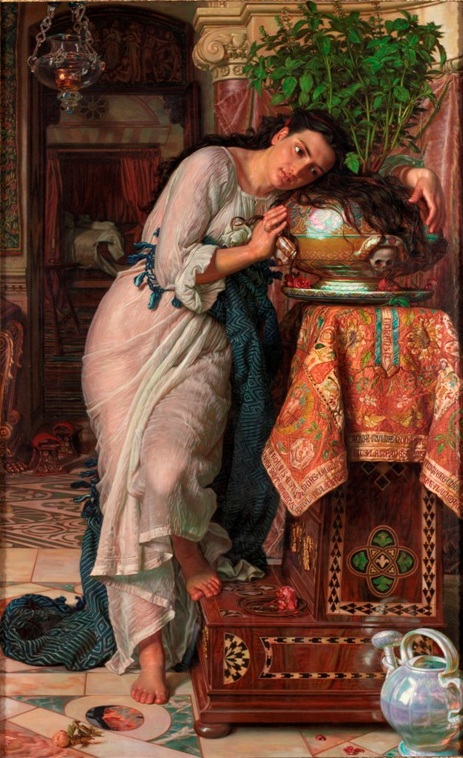Face to Face: exploring how galleries interpret collections for visitors by Anne Fountain

Isabella and the Pot of Basil by William Holman Hunt (1827-1910), 1867. © Tyne & Wear Archives & Museums
We have been extremely fortunate this year to be awarded a bursary from the Understanding British Portraits Network. I work as part of the Learning Team at the Laing Art Gallery, where we currently run a successful schools workshop interpreting one of our most famous paintings, Isabella and the Pot of Basil by William Holman Hunt. We wanted to research how other galleries encourage visitors to engage with their portrait collections, and looked forward to experiencing innovative and lively interpretation methods. Our aim is to develop some new resources for schools and families relating to the paintings on display in the 18th and 19th-century gallery.
My colleague, Joy Howe, and I began our research with a trip to London and a visit to the National Gallery. We explored the work on display using a resource pack Keys to Creativity. The pack had everything we needed to sketch in the gallery, including a drawing techniques booklet, pencils, rulers and clipboard. The booklet explores themes such as composition, perspective, light and shading and the human figure, and is packed with ideas about drawing techniques. We sat down for a relaxing morning sketching Elisabeth Louise Vigée Le Brun’s Self Portrait in a Straw Hat. We also explored the Gallery using the Active Looking Toolkit, which is a fun resource for families to explore the paintings on display.
We then moved on to the National Portrait Gallery, where we picked up some beautifully designed museum trails in the Sketch, Look and Explore series. These are full of simple but effective activities promoting observational skills. I particularly enjoyed designing hats and a pair of shoes inspired by the works on display!
In February we visited the Scottish National Portrait Gallery, where we explored the gallery with a nature trail, finding hidden butterflies and birds in the paintings, and finally playing with a Zoetrope. We also had a well-deserved break in the café and discovered the engaging touch-screen interactive there. I loved playing My Face My Place, and not only did I learn about the artwork but I also discovered which portrait I’m most like, and even had the opportunity to email it to myself to edit back at home! Another highlight was using an interactive based on the theory of ‘six degrees of separation’, where you had to make connections between a contemporary and historical figure. This was really well-designed and there was something for visitors of every age to enjoy.
Finally we visited the Walker Gallery, Liverpool. The works on display included pre-Raphaelite paintings by William Holman Hunt, Edward Burne-Jones and John Everett Millais, and were displayed in galleries in a very similar way to our displays at the Laing. The Walker Art Gallery has a fantastic area where young children can learn about art and the collections through play and fun activities. The children’s gallery was well thought out, with real artworks and objects integrated throughout the space.
This has been an excellent opportunity to observe and research best practice in national and regional museums. We are currently working on developing resources in response to observations made.


